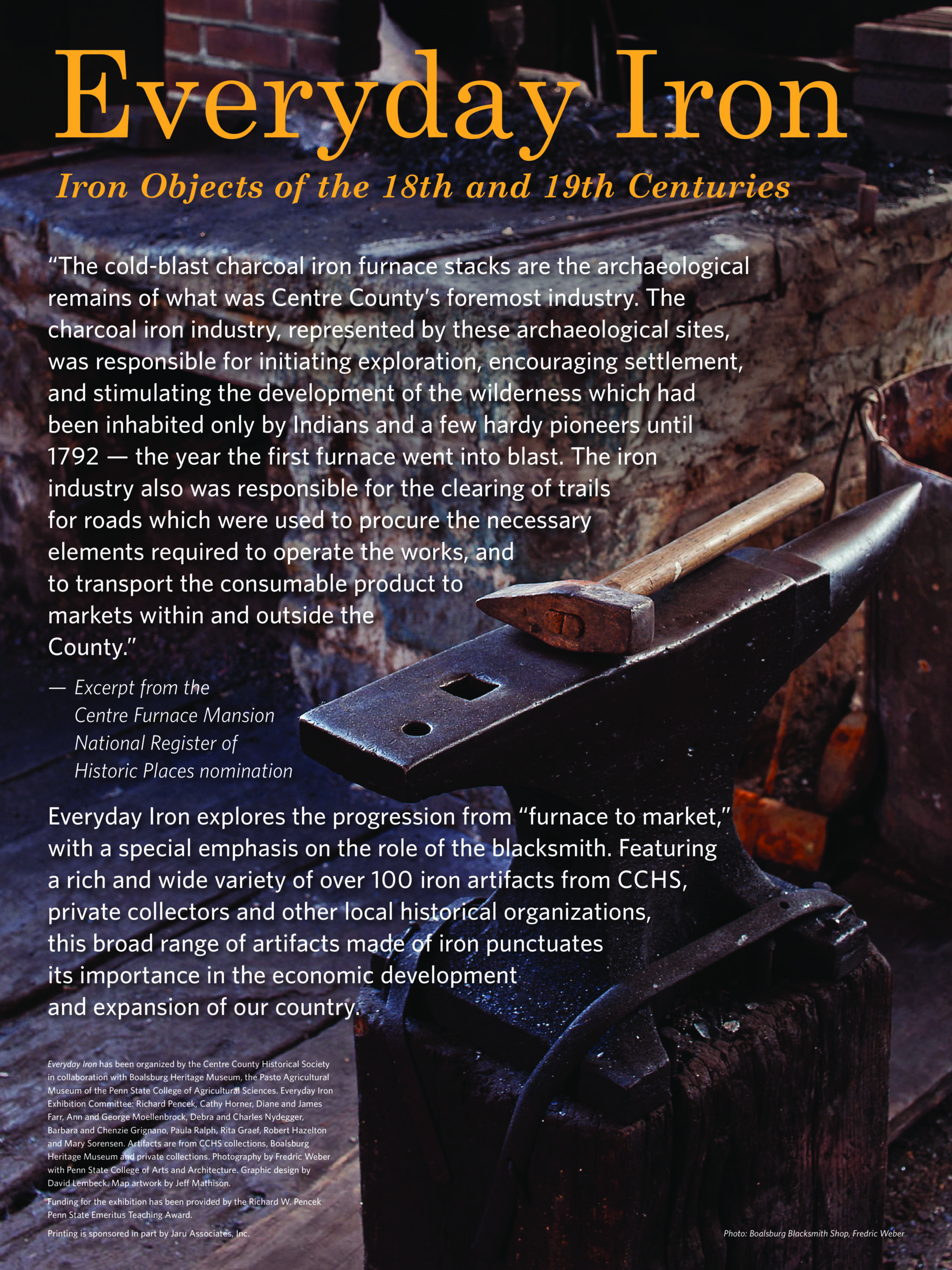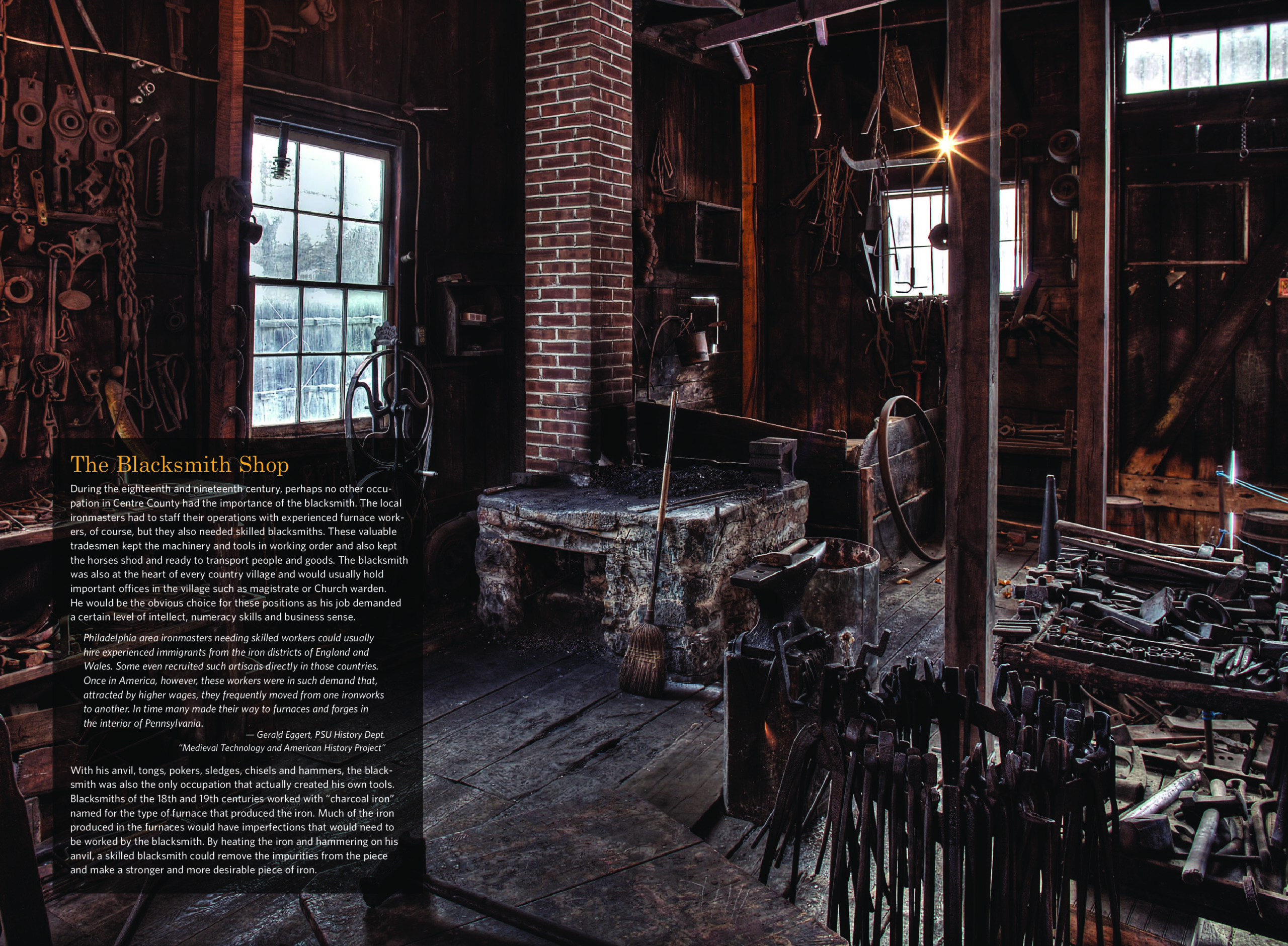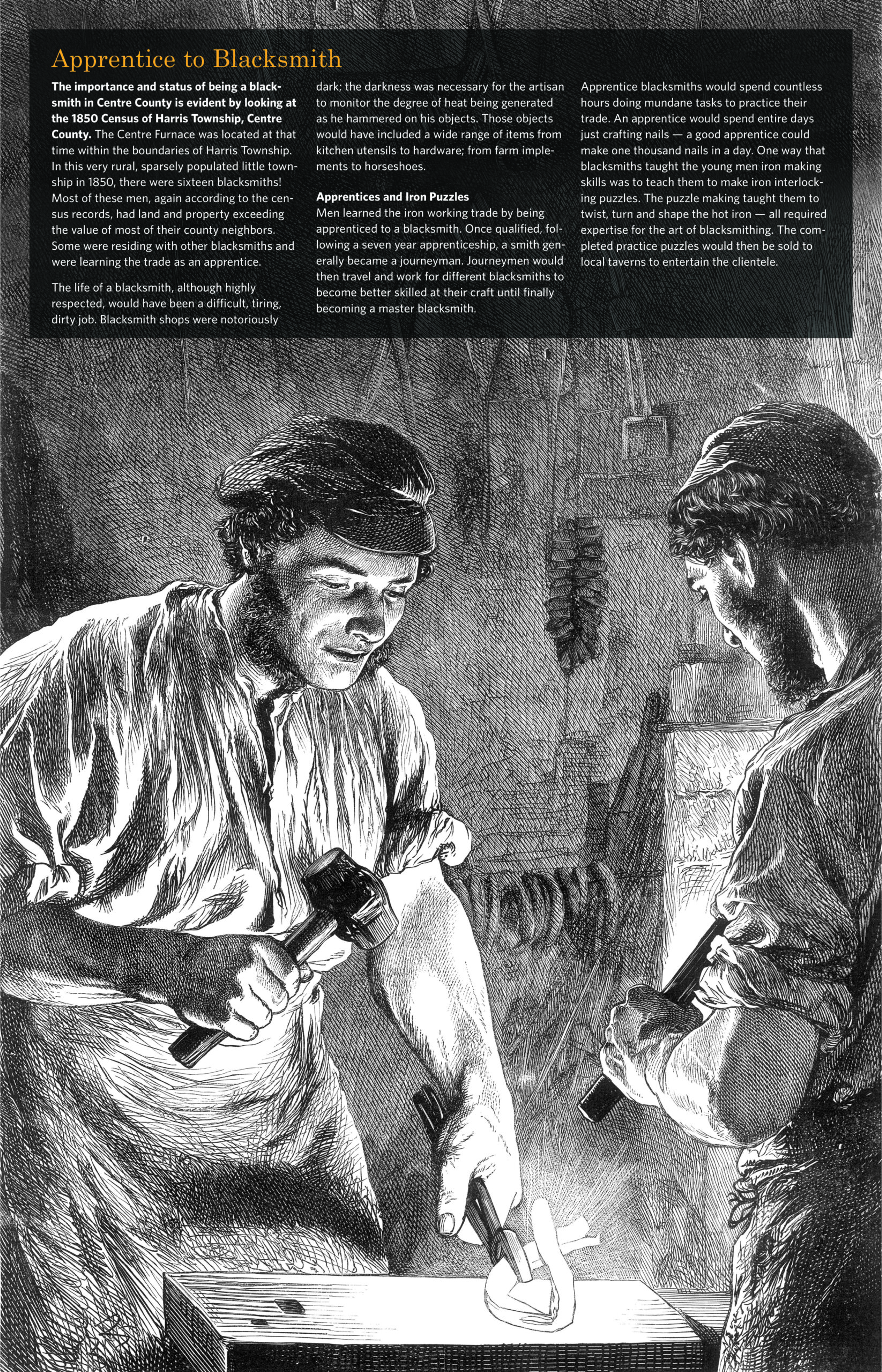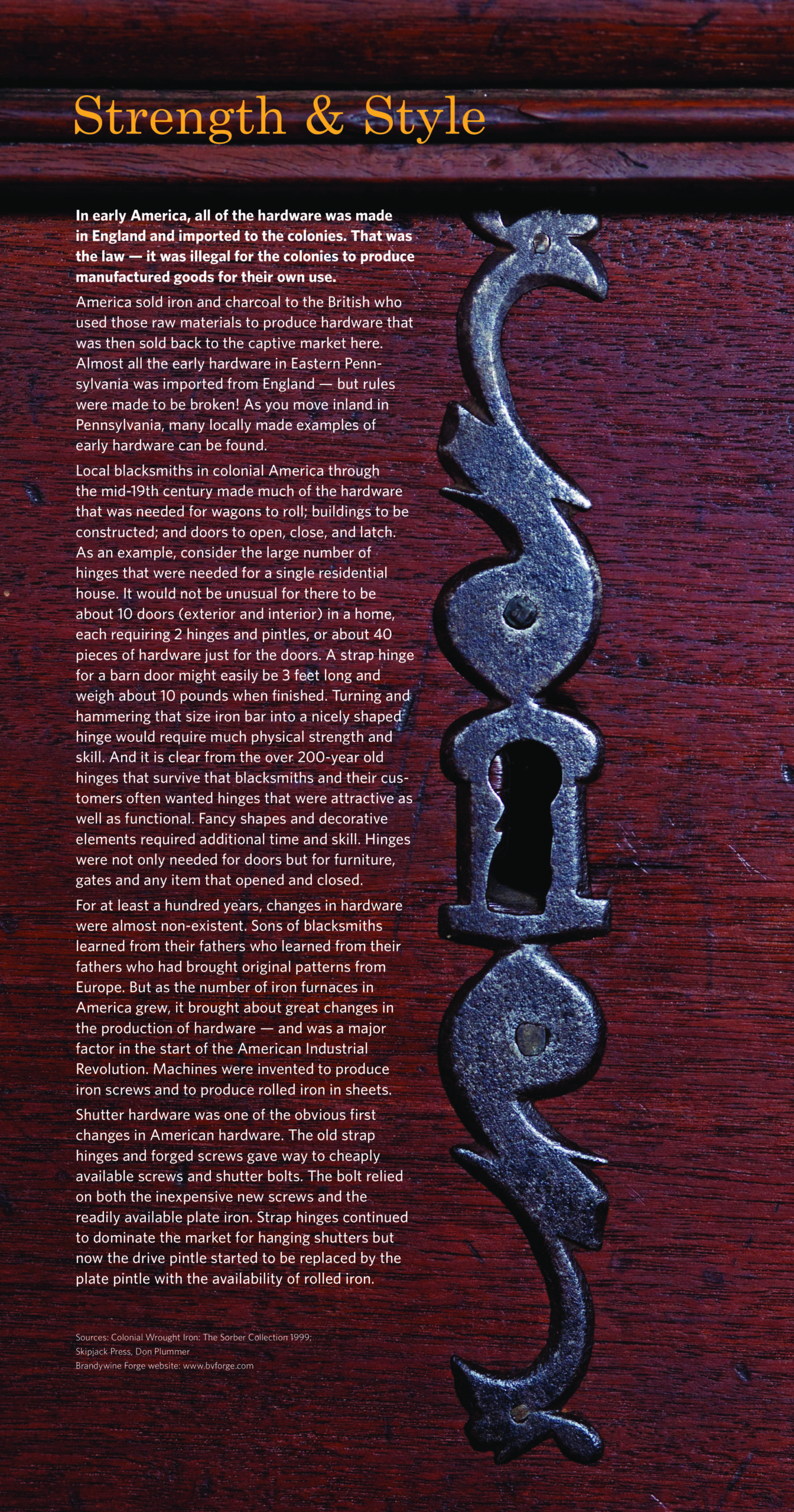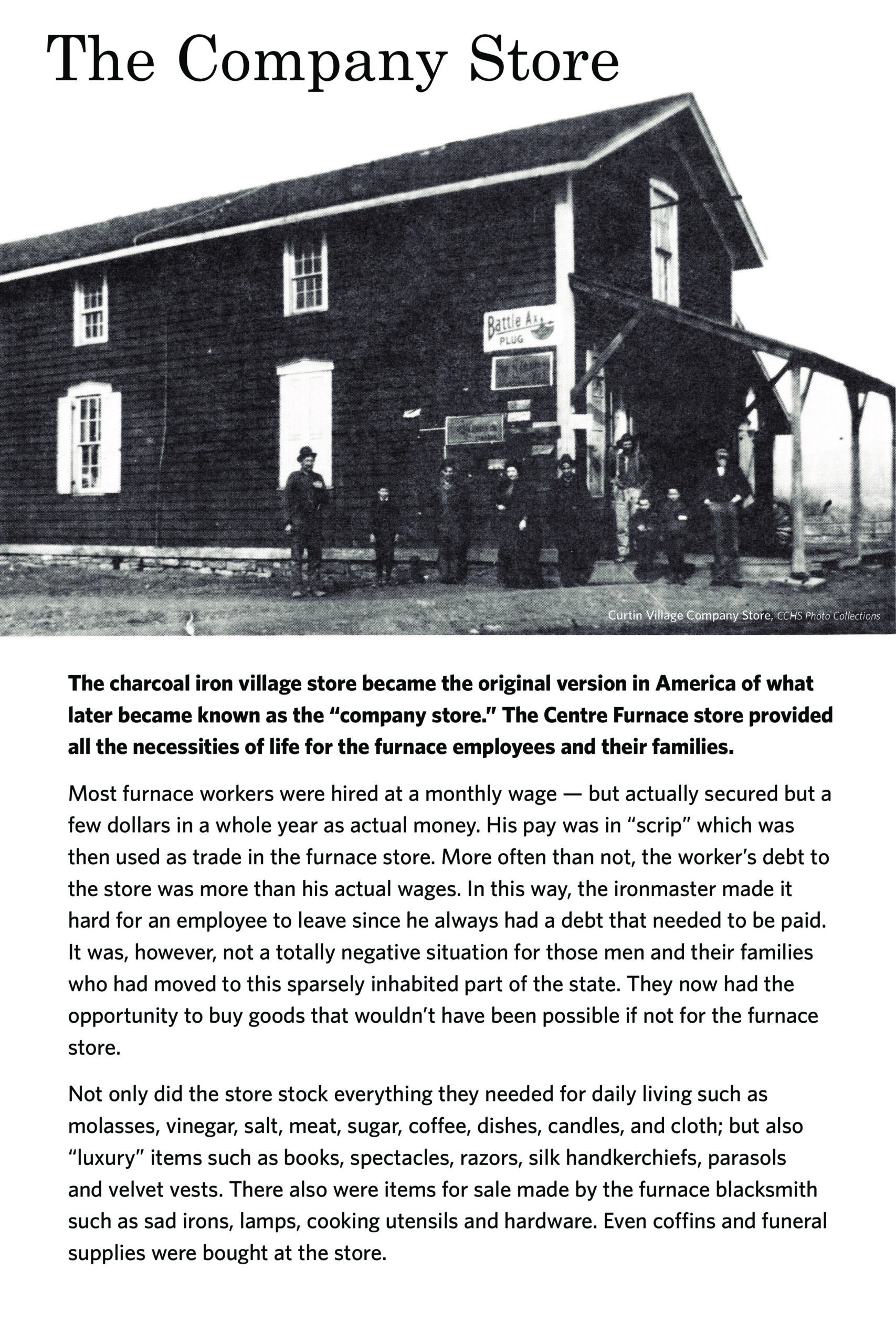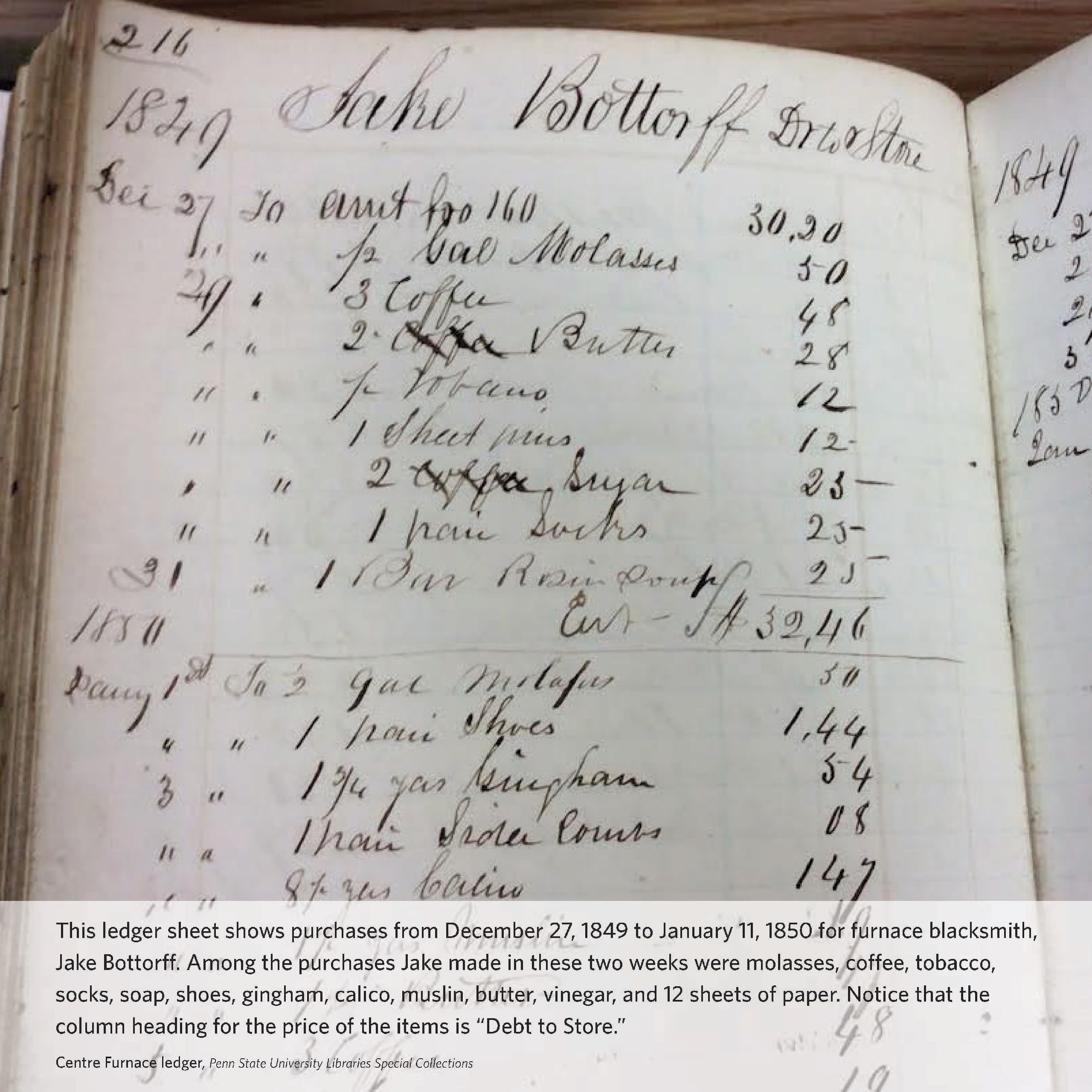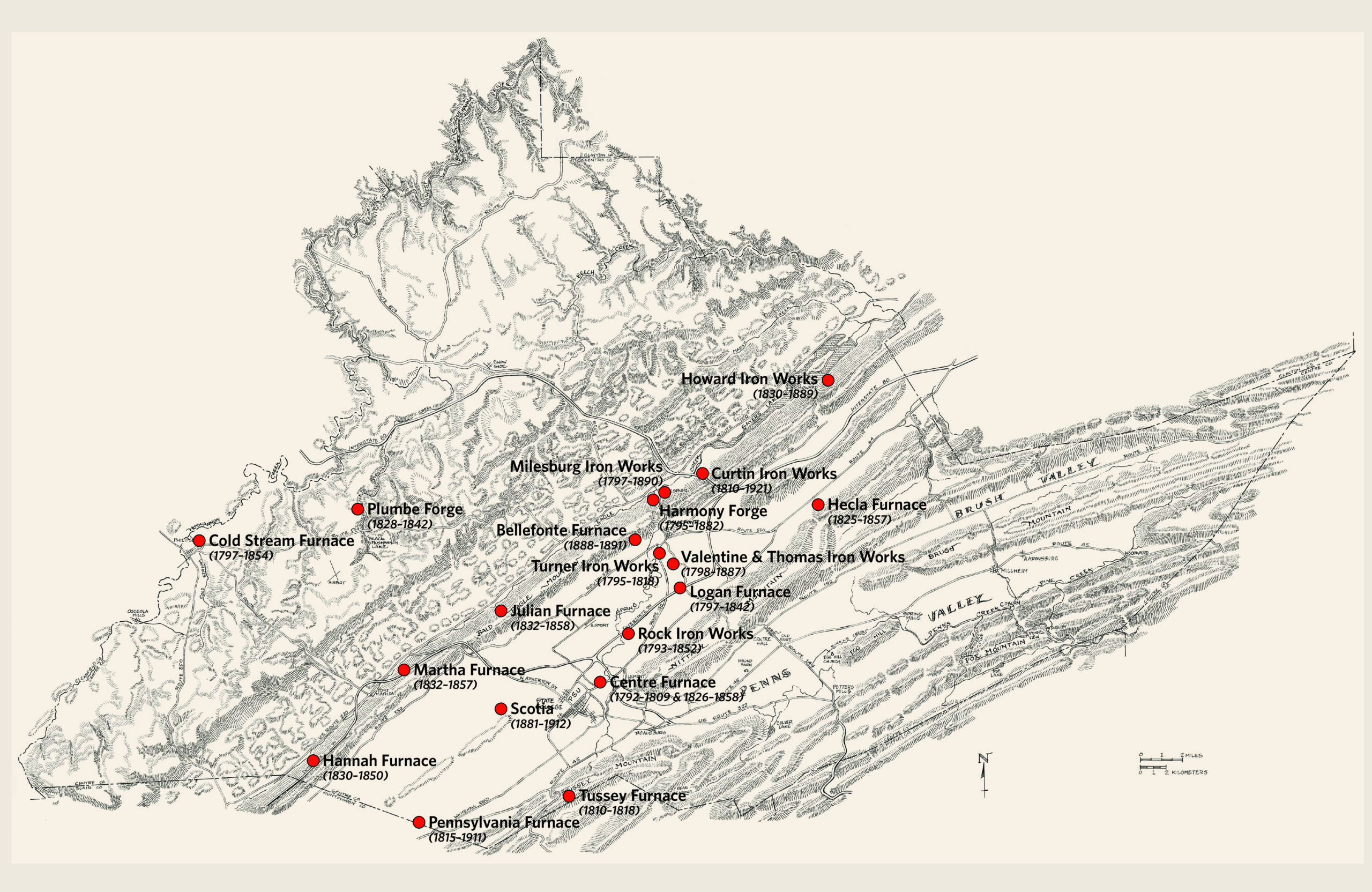Iron Objects of the 18th and 19th Centuries
Everyday Iron explores the progression from “furnace to market”, with a special emphasis on the role of the blacksmith. This exhibit featured a rich and wide variety of over 100 iron artifacts from CCHS, private collectors and other local historical organizations, this broad range of artifacts made of iron punctuates its importance in the economic development and expansion of our country.
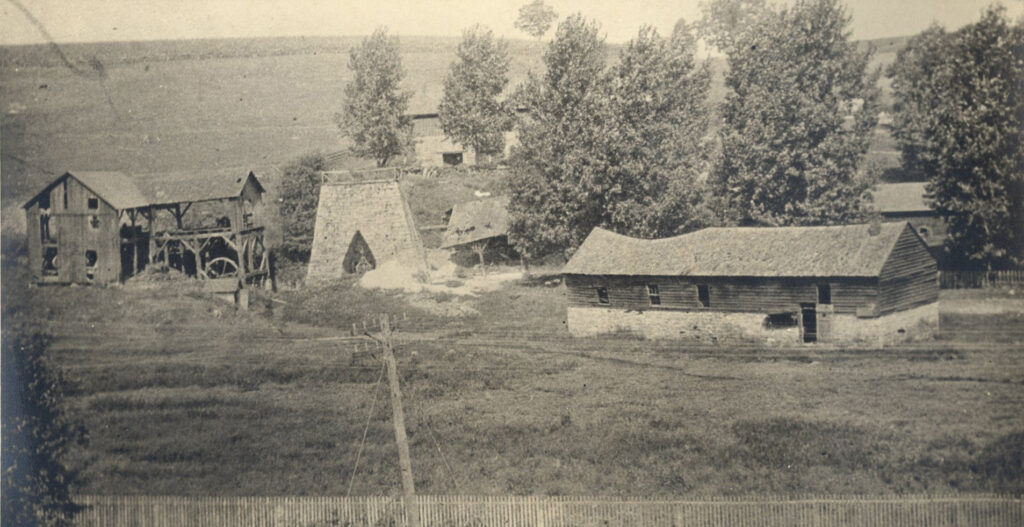
“The cold-blast charcoal iron furnace stacks are the archaeological remains of what was Centre County’s foremost industry. The charcoal iron industry, represented by these archaeological sites, was responsible for initiating exploration, encouraging settlement, and stimulating the development of the wilderness which had been inhabited only by Indians and a few hardy pioneers until 1792 – the year the first furnace went into blast. The iron industry also was responsible for the clearing of trails for roads which were used to procure the necessary elements required to operate the works, and to transport the consumable product to markets within and outside the County.” Excerpt from the Centre Furnace Mansion National Register of Historic Places nomination.
Click on the images below to view full size.
Everyday Iron has been organized by the Centre County Historical Society in collaboration with Boalsburg Heritage Museum, the Pasto Agricultural Museum of the Penn State College of Agricultural Sciences. Everyday Iron Exhibition Committee: Richard Pencek, Cathy Horner, Diane and James Farr, Ann and George Moellenbrock, Debra and Charles Nydegger, Barbara and Chenzie Grignano, Paula Ralph, Rita Graef, Robert Hazelton and Mary Sorensen. Artifacts are from CCHS collections, Boalsburg Heritage Museum and private collections. Photography by Fredric Weber with Penn State College of Arts and Architecture. Graphic design by David Lembeck. Map artwork by Jeffery Mathison.
Funding for the exhibition was provided by the Richard W. Pencek Penn State Emeritus Teaching Award.
